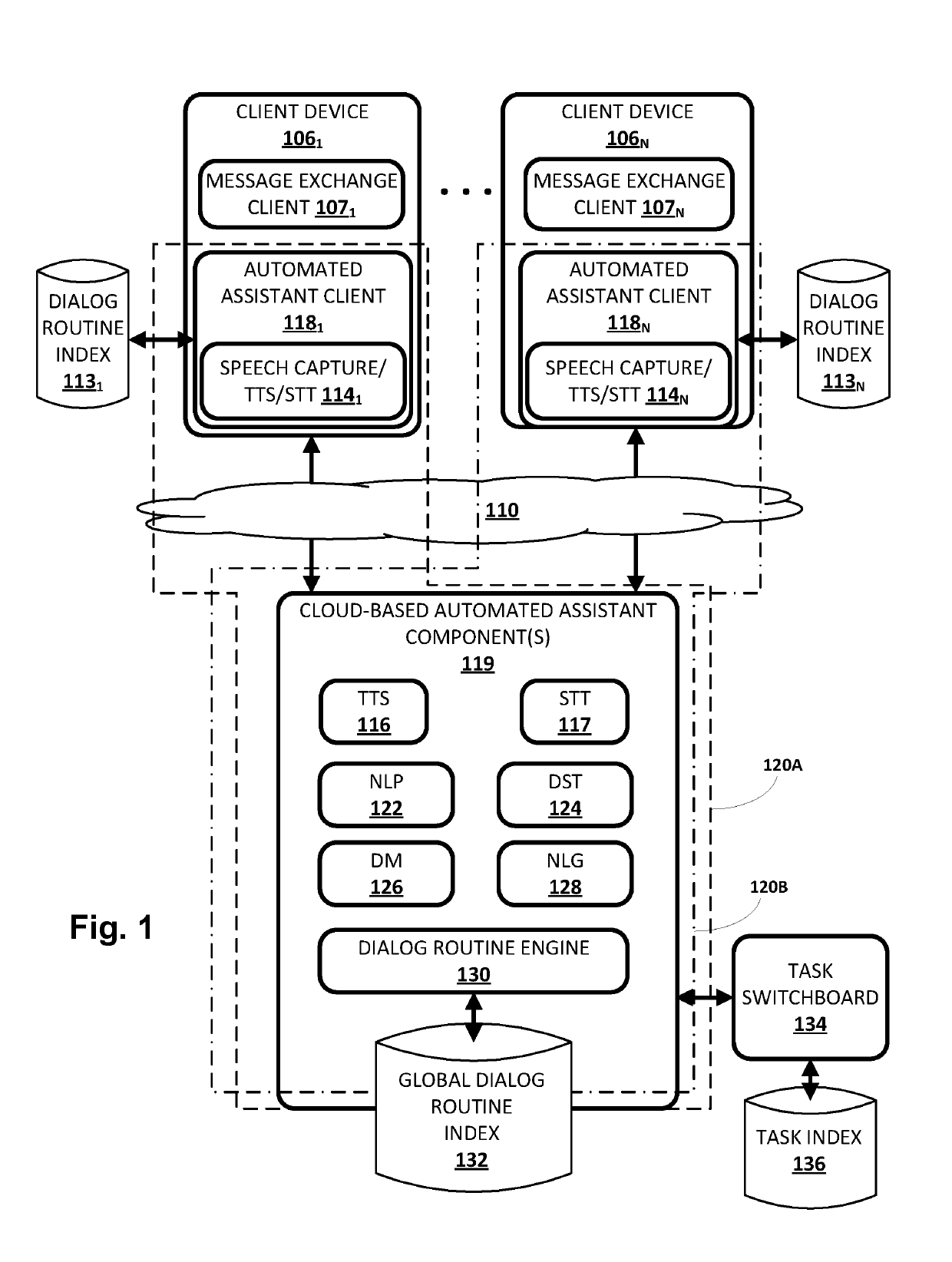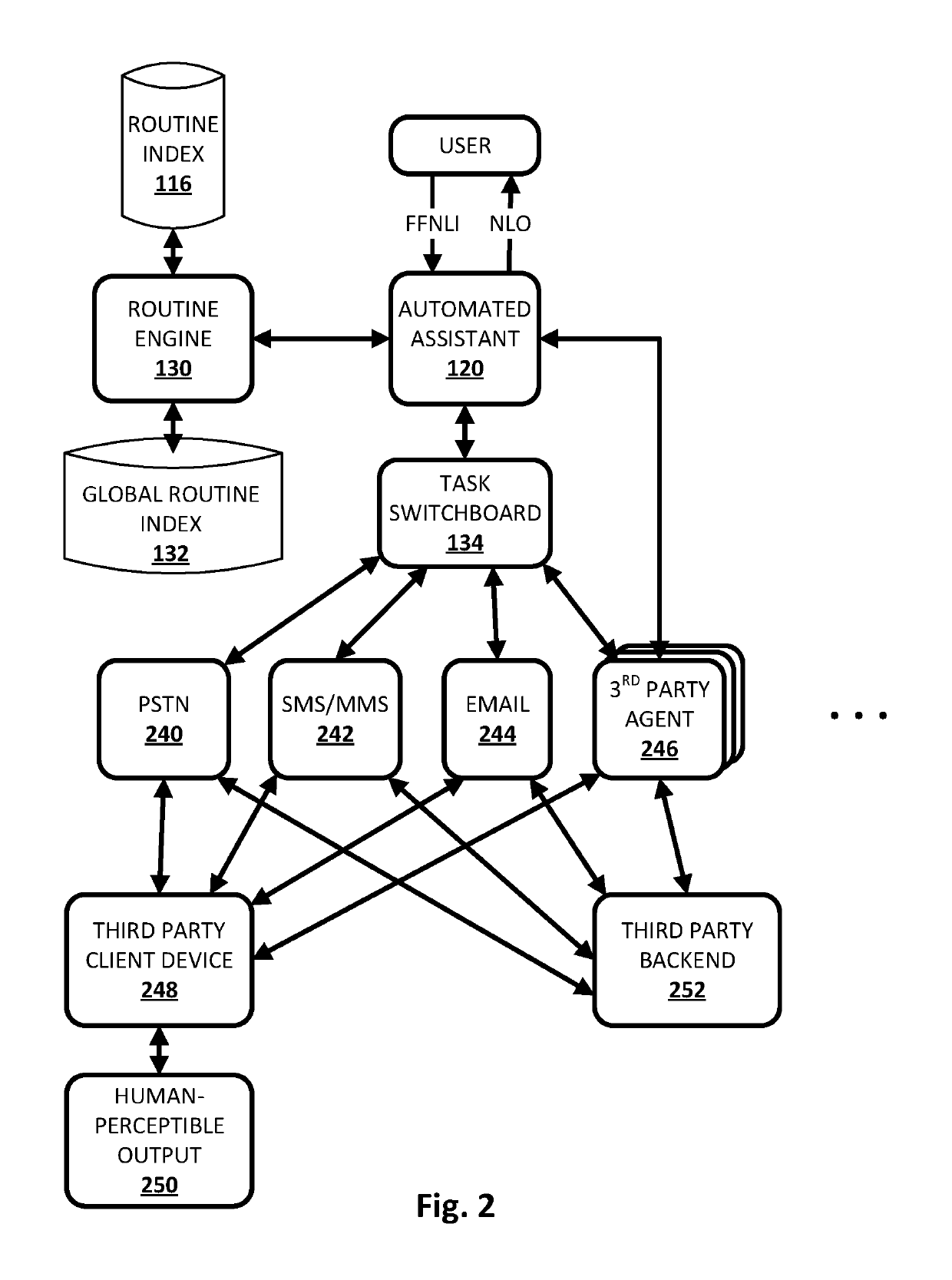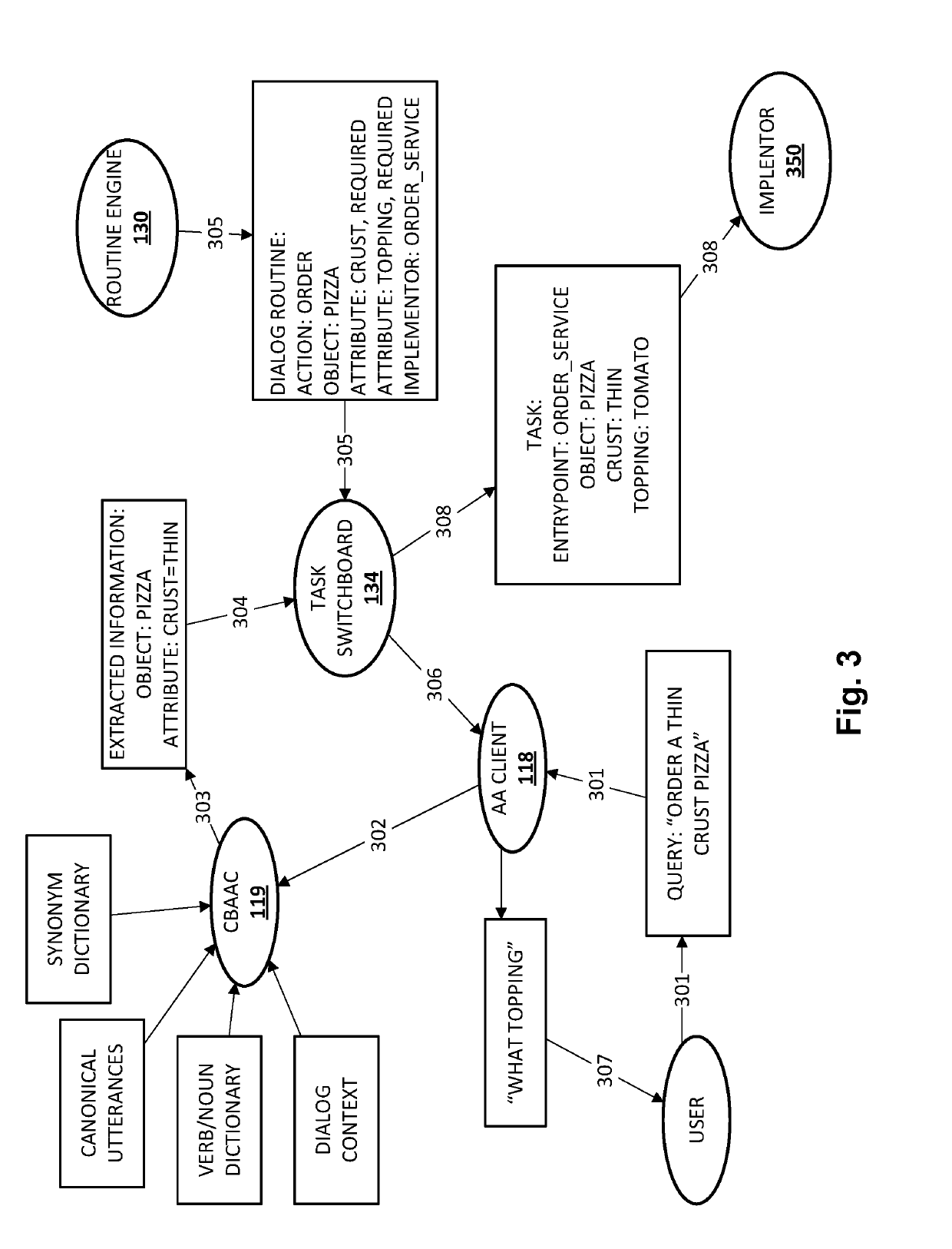User-programmable automated assistant
a technology of user-programmable and automated assistants, applied in program control, instruments, data processing applications, etc., can solve the problems of inability to invoke automated assistants to perform many tasks, unable to meet the needs of users, so as to achieve rapid tasks, limit scalability, and preserve computing resources
- Summary
- Abstract
- Description
- Claims
- Application Information
AI Technical Summary
Benefits of technology
Problems solved by technology
Method used
Image
Examples
Embodiment Construction
[0033]Now turning to FIG. 1, an example environment in which techniques disclosed herein may be implemented is illustrated. The example environment includes a plurality of client computing devices 1061-N. Each client device 106 may execute a respective instance of an automated assistant client 118. One or more cloud-based automated assistant components 119, such as a natural language processor 122, may be implemented on one or more computing systems (collectively referred to as a “cloud” computing system) that are communicatively coupled to client devices 1061-N via one or more local and / or wide area networks (e.g., the Internet) indicated generally at 110.
[0034]In some implementations, an instance of an automated assistant client 118, by way of its interactions with one or more cloud-based automated assistant components 119, may form what appears to be, from the user's perspective, a logical instance of an automated assistant 120 with which the user may engage in a human-to-compute...
PUM
 Login to View More
Login to View More Abstract
Description
Claims
Application Information
 Login to View More
Login to View More - R&D
- Intellectual Property
- Life Sciences
- Materials
- Tech Scout
- Unparalleled Data Quality
- Higher Quality Content
- 60% Fewer Hallucinations
Browse by: Latest US Patents, China's latest patents, Technical Efficacy Thesaurus, Application Domain, Technology Topic, Popular Technical Reports.
© 2025 PatSnap. All rights reserved.Legal|Privacy policy|Modern Slavery Act Transparency Statement|Sitemap|About US| Contact US: help@patsnap.com



